Articles
- Page Path
- HOME > Korean J Community Nutr > Volume 16(6); 2011 > Article
-
Original Article
- Influencing Factors on the Dietary supplements Consumption among Children in Korea
- Jeeyeon Lee, Dohee Kim, Yoonna Lee, Eunmi Koh, Youngsoo Jang, Hyeyoung Lee, Youngae Jang, Cho-il Kim
-
Korean Journal of Community Nutrition 2011;16(6):740-750.
DOI: https://doi.org/10.5720/kjcn.2011.16.6.740
Published online: December 31, 2011
Nutrition Policy & Promotion Team, Korea Health Industry Development Institute, Chungbuk, Korea.
1Health · Functional Food Standardization Division, Korea Food & Drug Administration, Chungbuk, Korea.
2NongShim Ltd. Seoul, Korea.
- Corresponding author: Cho-il Kim, Department of Food & Nutrition Industry, Korea Health Industry Development Institute, Osong Health Technology Administration Complex, 187 Osongsaengmyeong2-ro, Gangoe-myeon, Cheongwon-gun, Chungbuk 363-700, Korea. Tel: (043)713-8611, Fax: (043) 713-8907, kimci@khidi.or.kr
Copyright © 2011 The Korean Society of Community Nutrition
- 1,310 Views
- 2 Download
- 5 Crossref
Figure & Data
REFERENCES
Citations

- A Study on the Dietary Behavior of Korean Adults: Focus on Dietary Supplement Intake, Household Size, and COVID-19
Jinkyung Choi
Korean Journal of Community Nutrition.2022; 27(6): 468. CrossRef - Use of vitamin and mineral supplements and related variables among university students in Seoul
Jung-Hwa Choi, Youjin Je
Journal of Nutrition and Health.2015; 48(4): 352. CrossRef - The Status of Dietary Supplements Intake in Korean Preschool Children: Data from the Korea National Health and Nutrition Examination Survey 2010-2012
Dong Soo Kang, Kun Song Lee
Pediatric Gastroenterology, Hepatology & Nutrition.2014; 17(3): 178. CrossRef - A Survey on the Usage Patterns of Vitamin and Mineral Supplements as Over-The-Counter Drugs among Korean Adolescents
Ji Hye Han, Hyun Sook Lee, Sun Hyo Kim
Journal of the Korean Society of Food Culture.2014; 29(4): 364. CrossRef - Dietary Supplements Use and Related Factors of Preschoolers in 3 Korean Cities
Hye Sil Kim, Hye Young Lee, Mi Kyung Kim
Pediatric Gastroenterology, Hepatology & Nutrition.2013; 16(2): 104. CrossRef
General characteristics of the respondents by age
1) Frequency (percent by weighted frequency)
2) Percent Ideal Body Weight
Proportion (%) of children who consumed dietary supplements (DS): general characteristics
1) Frequency (percent by weighted frequency)
2) Percent Ideal Body Weight
Proportion (%) of children who consumed DS: socio-economic characteristics
1) Frequency (percent by weighted frequency)
2) Large city: Seoul, Inchon, Daejun, Daegu, Busan, Usan
3) Small & mid-sized city: Other cities
Proportion (%) of children who consumed DS: mother's characteristics
1) Frequency (percent by weighted frequency)
2) clerk, skilled labor or service, etc.
Proportion (%) of children who consumed each type of DS (DS consumers only)
1) Multiple choice
2) Frequency (percent by weighted frequency by DS consumers)
Proportion (%) of children who consumed functional foods (DS consumers only)
1) Frequency (percent by weighted frequency)
2) Total no. of DS consumers
Proportion (%) of children who consumed vitamins/minerals (DS consumers only)
1) Frequency (percent by weighted frequency)
2) Total no. of DS consumers
Proportion (%) of children who consumed other supplements (DS consumers only)
1) Frequency (percent by weighted frequency)
2) Total no. of DS consumers
Proportion(%) of children who consumed DS by other characteristics at each age group
1) Frequency (percent by weighted frequency
2) Percent Ideal Body Weight
3) clerk, skilled labor or service, etc.
Distribution of respondents by housing type and monthly household income
Distribution of respondents region and monthly household income
1) Frequency (percent by weighted frequency) 2) Percent Ideal Body Weight
1) Frequency (percent by weighted frequency) 2) Percent Ideal Body Weight
1) Frequency (percent by weighted frequency) 2) Large city: Seoul, Inchon, Daejun, Daegu, Busan, Usan 3) Small & mid-sized city: Other cities
1) Frequency (percent by weighted frequency) 2) clerk, skilled labor or service, etc.
1) Multiple choice 2) Frequency (percent by weighted frequency by DS consumers)
1) Frequency (percent by weighted frequency) 2) Total no. of DS consumers
1) Frequency (percent by weighted frequency) 2) Total no. of DS consumers
1) Frequency (percent by weighted frequency) 2) Total no. of DS consumers
1) Frequency (percent by weighted frequency 2) Percent Ideal Body Weight 3) clerk, skilled labor or service, etc.

 KSCN
KSCN
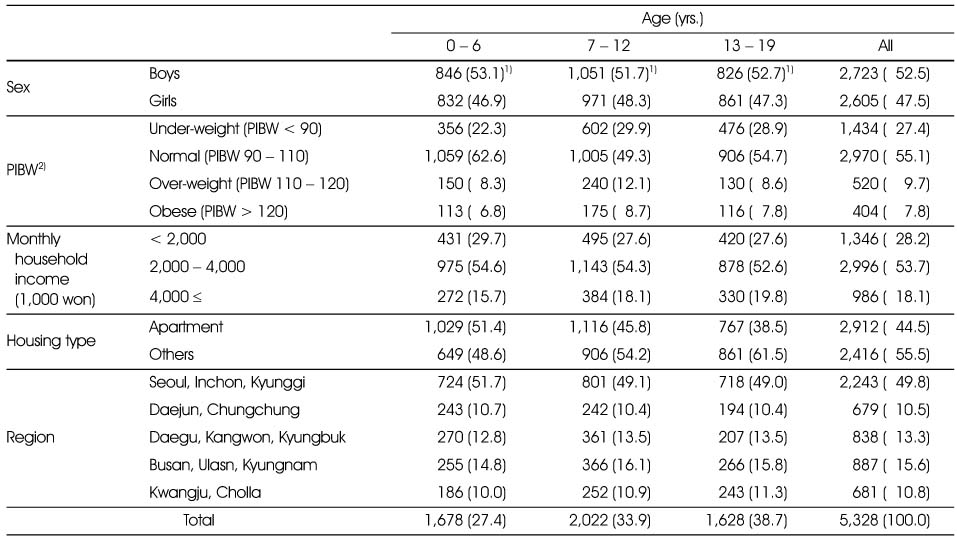
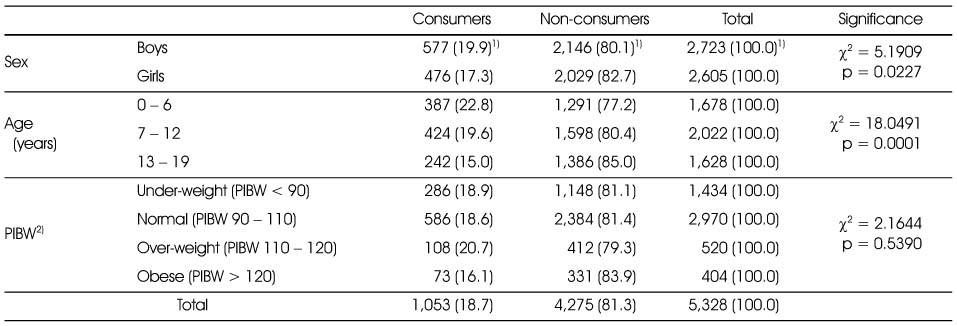
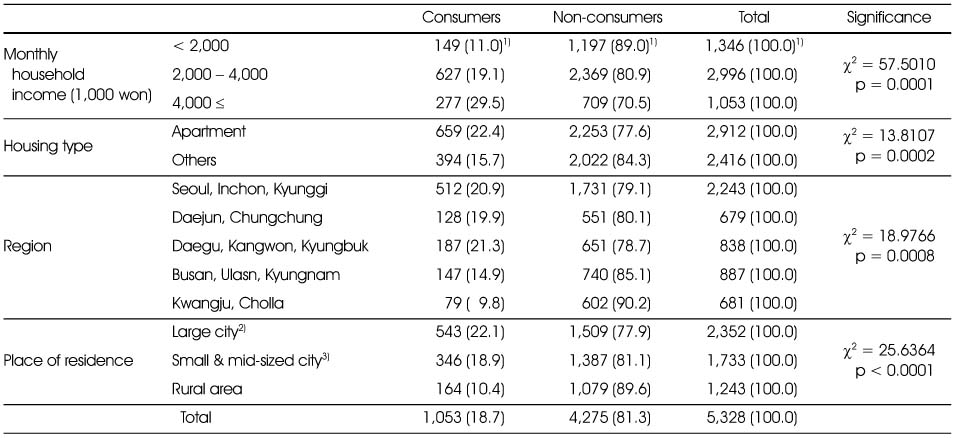
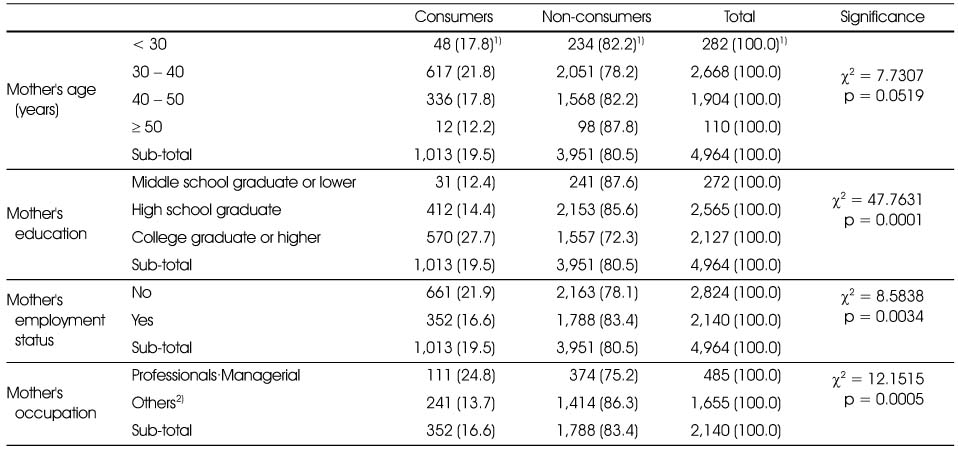




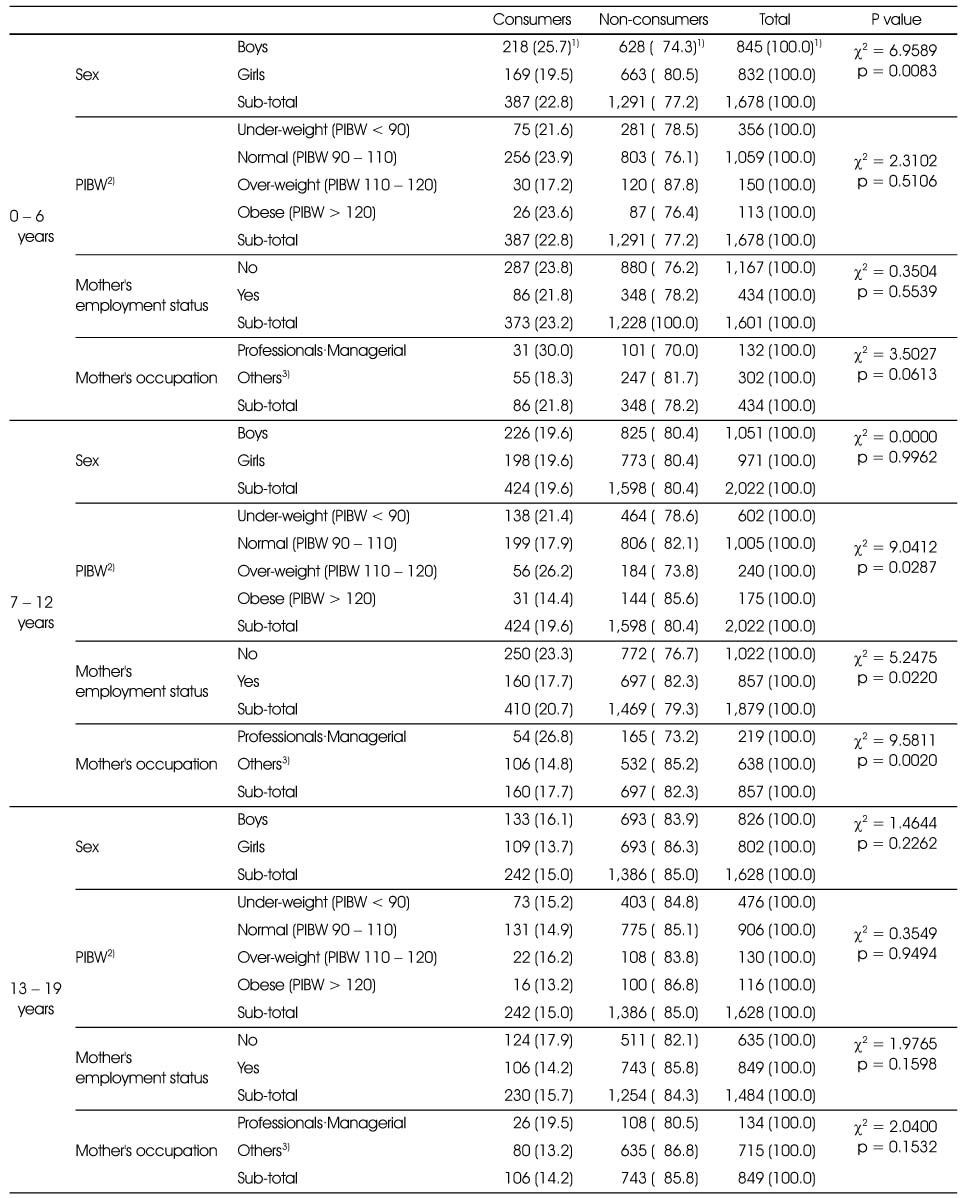


 Cite
Cite


